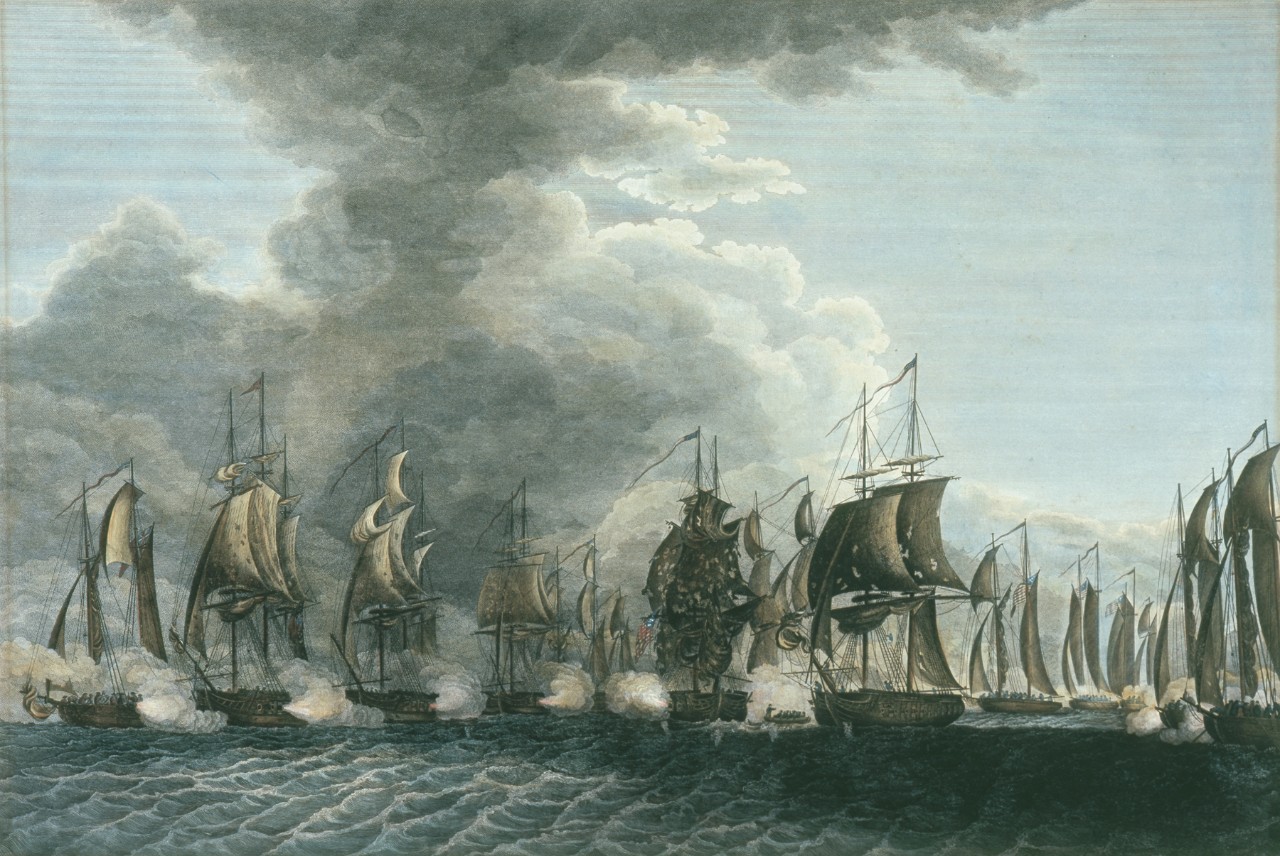Inland Operations
Lake Erie
The Canadian border quickly became the focus for both the British and the Americans at the beginning of the War of 1812. The failure of a land assault by American General William Hull gave the British control of Lake Erie. As the British attempted to reinforce their position and the Americans tried to retake the region, an emphasis on naval superiority developed between the two countries. The lake became the site of an arms race, with the opponents sending men and materials to construct more and better ships in an effort to achieve military superiority.
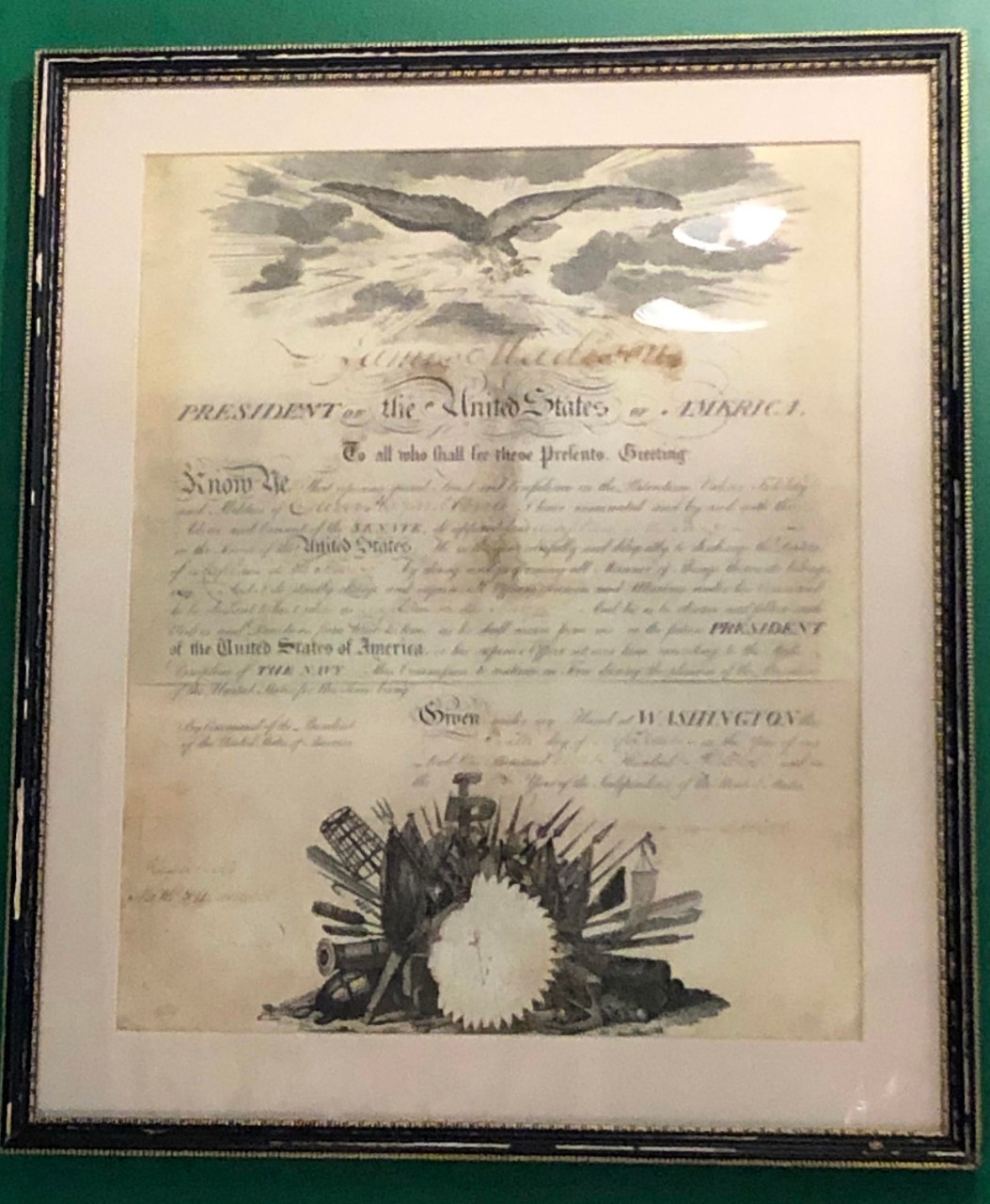
Oliver Hazard Perry’s Commission to the United States Navy, signed by President James Madison. Accession # 82-204-F.
Oliver Hazard Perry's Commission
After receiving his commission to the Navy in 1799, Perry served in the Tripoli campaign as a midshipman. Following promotions to the rank of master commandant, he began the War of 1812 as the commander of a gunboat squadron at Newport, Rhode Island. In 1813, the Secretary of the Navy, William Jones, and Commodore Isaac Chauncey assigned Oliver Hazard Perry to Lake Erie.
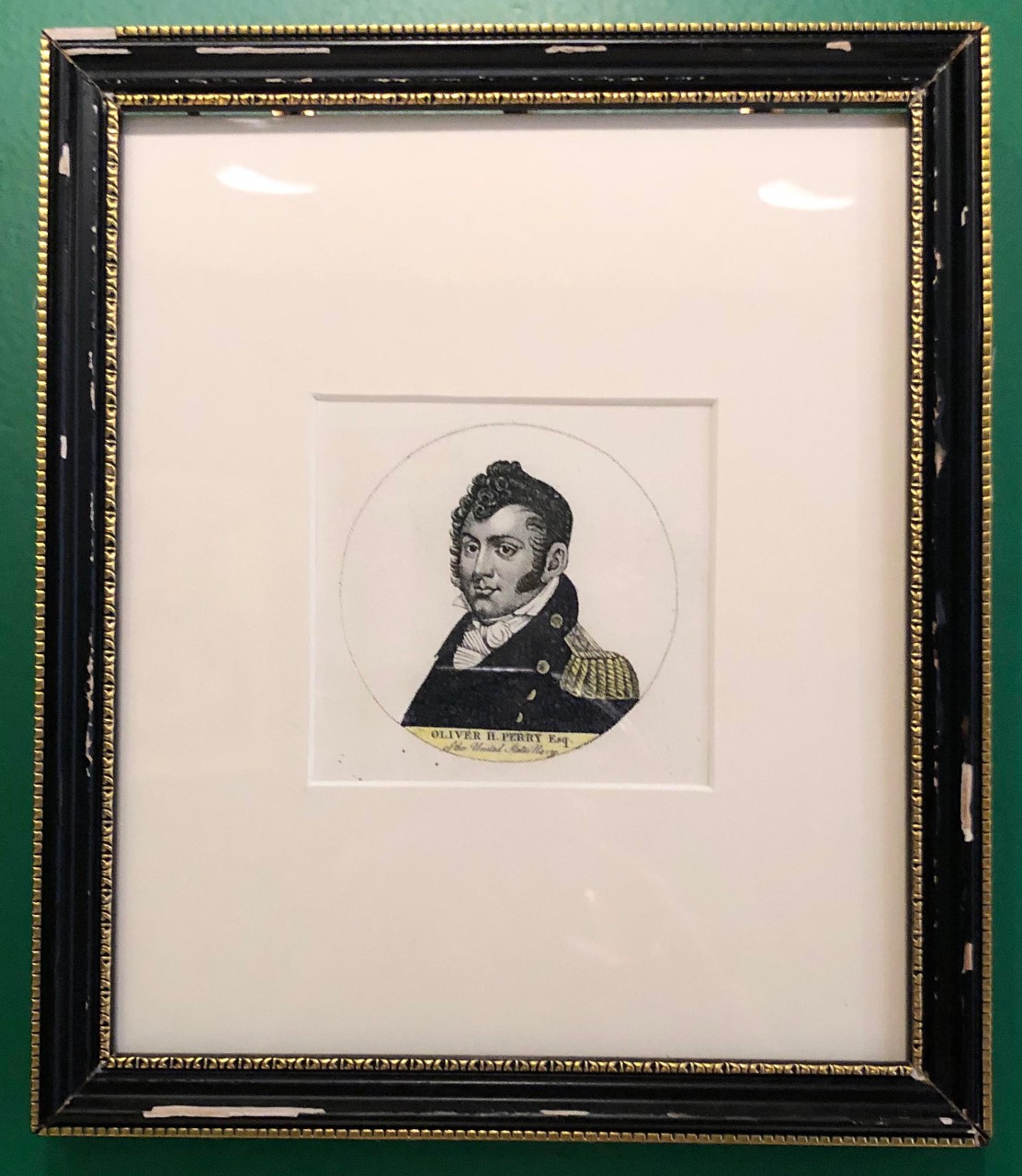
Oliver Hazard Perry portrait. Stipple Print; By Unknown.
Oliver Hazard Perry
As the commander of U.S. naval forces on Lake Erie and Lake Ontario, Commodore Isaac Chauncey recruited Perry to command the naval force on Lake Erie with the opportunity to “gain honor for yourself and reputation for your Country.”

Copper Spike Location: On display in the “Forgotten Wars” exhibit Accession # 86-338-A.
Copper Spike
Perry’s transfer to Lake Erie included orders to construct and staff a naval force sufficient to defeat the local British forces. He built his fleet with the assistance of experienced shipbuilders Adam and Noah Brown. Using locally grown timber, the Browns built Perry two 20-gun brigs, Lawrence and Niagara, as well as a fleet of smaller craft. This copper spike is from one of Perry’s ships and bears a “US” stamp.
…to appreciate [Perry’s] character, a person must have seen him, as I did, fitting out a fleet of six new vessels of war…at some hundreds of miles from the seacoast, and in a district where, except the green timber growing in the woods, not one single article necessary for the equipment of a vessel could be obtained that was not subject to a land transportation of some 120 to 400 miles through roads nearly impassable.
Harm Jan Huidekoper, a civilian present at Lake Erie during the construction of Perry’s fleet
Battle of Lake Erie
With a well-built fleet at his command, Perry faced off against Captain Robert Barclay and the British on September 10, 1813. The nine-ship American force opposed a British fleet of six ships. Outnumbering the British, the Americans enjoyed an advantage in short-range firepower from their carronades but suffered from a shortage of long guns. As the battle began, fire from British long guns left Perry’s flagship Lawrence floating helpless with four-fifths of her crew casualties. This assault forced Perry to transfer by rowboat to Niagara. From his new flagship, Perry closed the gap between his fleet and the British, and blasted them with overwhelming close-range fire, ultimately forcing their surrender.
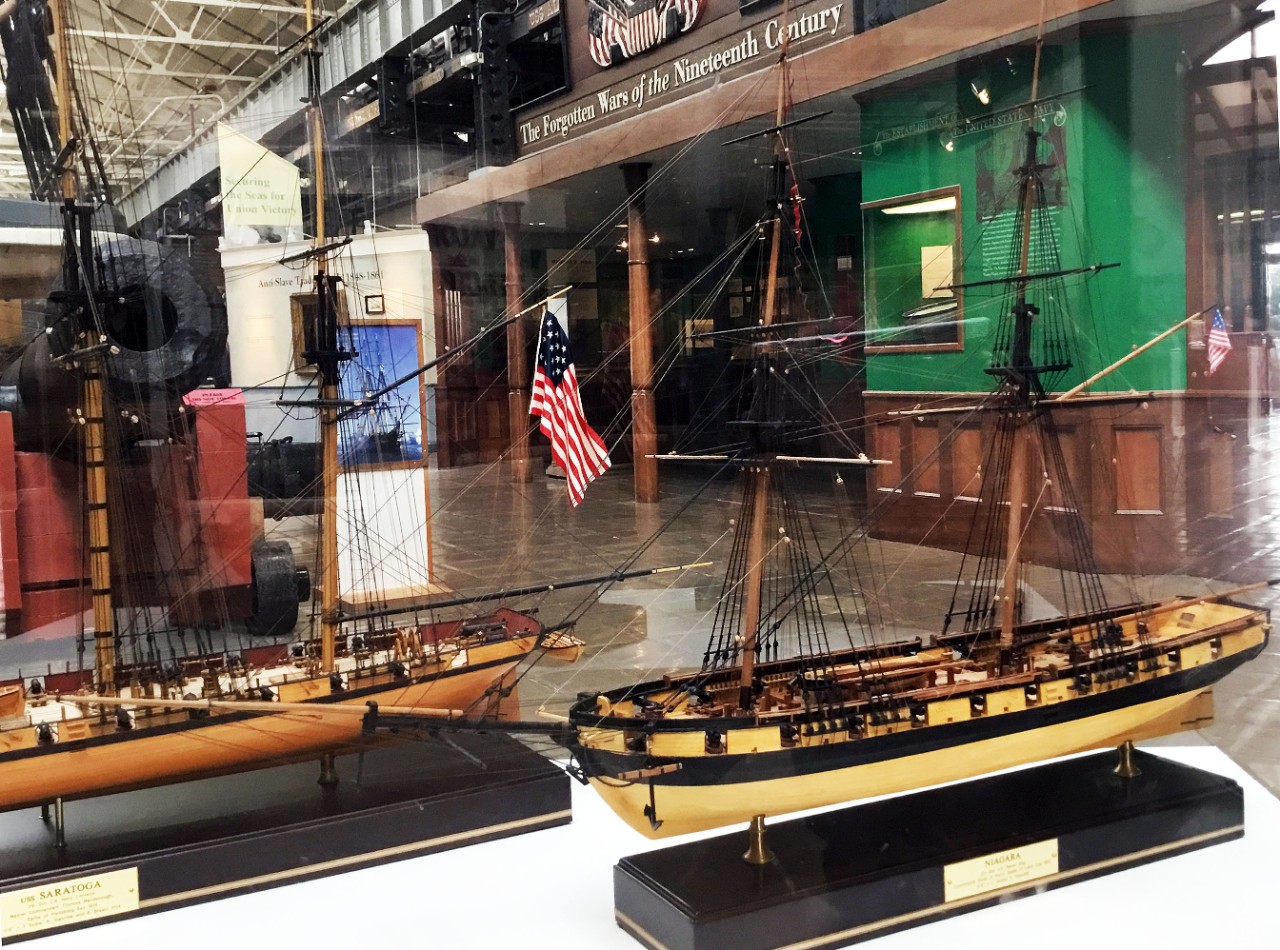
U.S. Brig Niagara. On Display at the National Museum of the U.S. Navy.
Built on Lake Erie in 1813, Niagara’s keel was constructed out of a single black oak log and mounted 20 guns. She was launched on 4 July 1813, and set sail with Oliver Perry’s fleet in September to confront the British fleet. During the historic battle on 10 September, Niagara became Perry’s flagship, unleashing devastating broadsides on the British ships. After Perry’s victory, Niagara continued to serve in the Great Lakes region until the war ended in 1815.
Length: 110’ Complement: 130 officers and men
Beam: 30’ Armament: Eighteen 32-pounder guns
Draft: 9’ Two 12-pounder guns
Scale ¼” to 1’
Courtesy, Naval Sea Systems Command
We have met the enemy and they are ours
Oliver Hazard Perry to General William Henry Harrison, following the Battle of Lake Erie.
Treasury Medals
From the Revolutionary War through the Civil War, Congress awarded Treasury Medals as a way of recognizing outstanding service to the country. For the Lake Erie victory, Congress awarded two gold medals, one to Perry and one to Elliott. Commissioned officers received silver medals cast of the same design. Congress rewarded the midshipman and sailing-masters with ceremonial swords and enlisted crewmembers with an extra three-months pay. These medals are copies made from bronze.

Oliver H. Perry Treasury Medal. Accession # 60-274-J.
Oliver H. Perry Treasury Medal
Congress awarded this treasury medal to Oliver Hazard Perry for his victory during the Battle of Lake Erie.
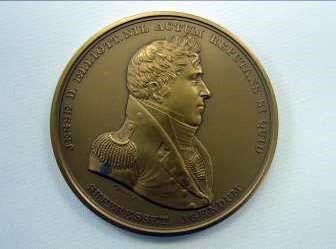
Jesse Elliott Treasury Medal. Accession # 60-274-K.
Jesse Elliott Treasury Medal
Shortly before the Battle of Lake Erie, Elliot received a promotion to Master Commandant and transferred to the northern lakes. He earned a Treasury Medal for his role in securing the American victory. Despite this, Perry harshly criticized Elliot for a deliberate hesitancy to engage the enemy.
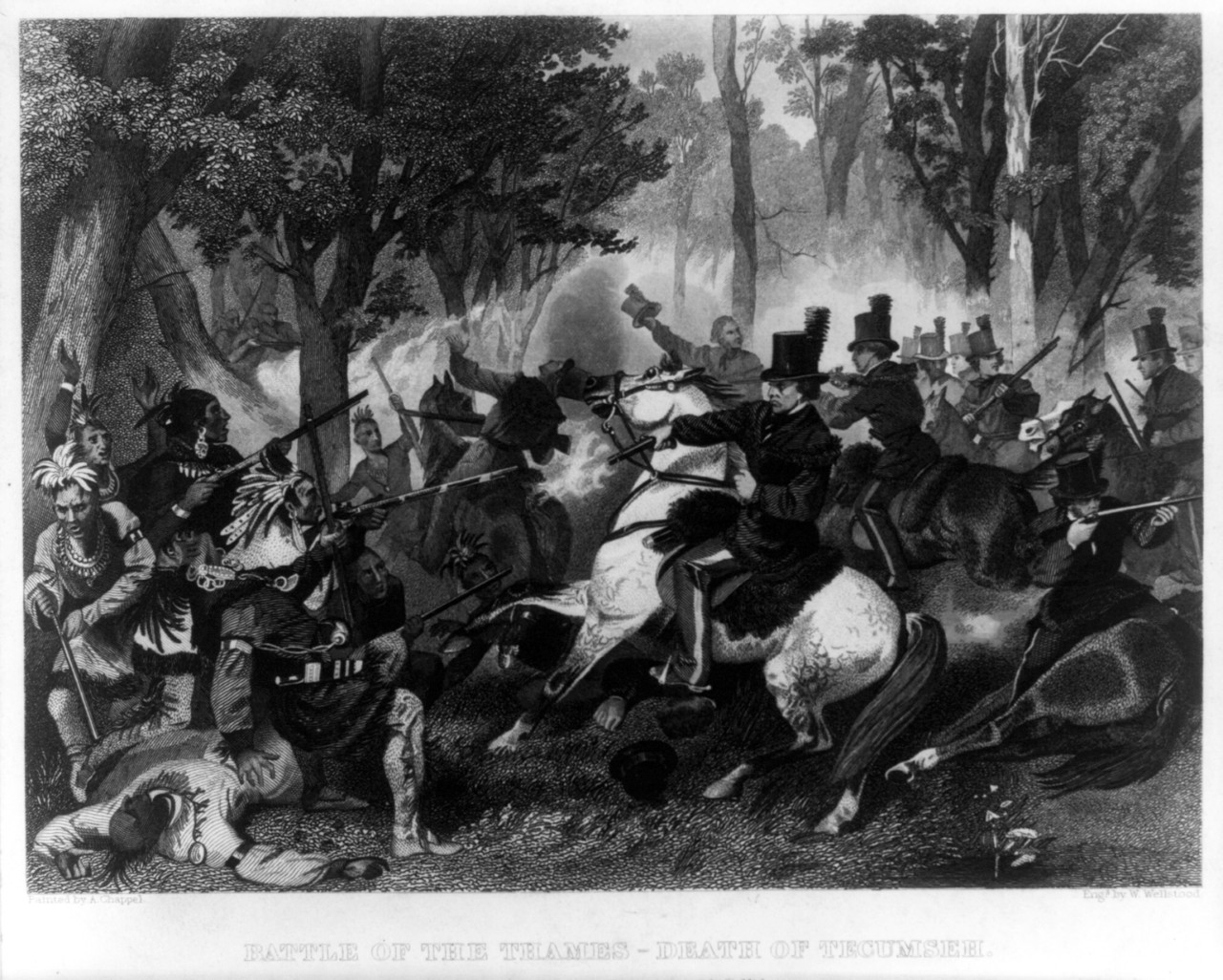
Battle of the Thames – Death of Tecumseh. Painted by A. Chappel ; engd. by W. Wellstood. New York : Johnson, Fry & Co., c1857. Courtesy of the Library of Congress, LC-USZ62-16868.
Battle of the Thames
The success of the American fleet and a victory by the U.S. Army at the Battle of the Thames secured control of Lake Erie and eased the possibility of British invasion from the north. The death of Native American leader Tecumseh at the Thames further hindered the British war effort by weakening the resolve of their Indian allies.


